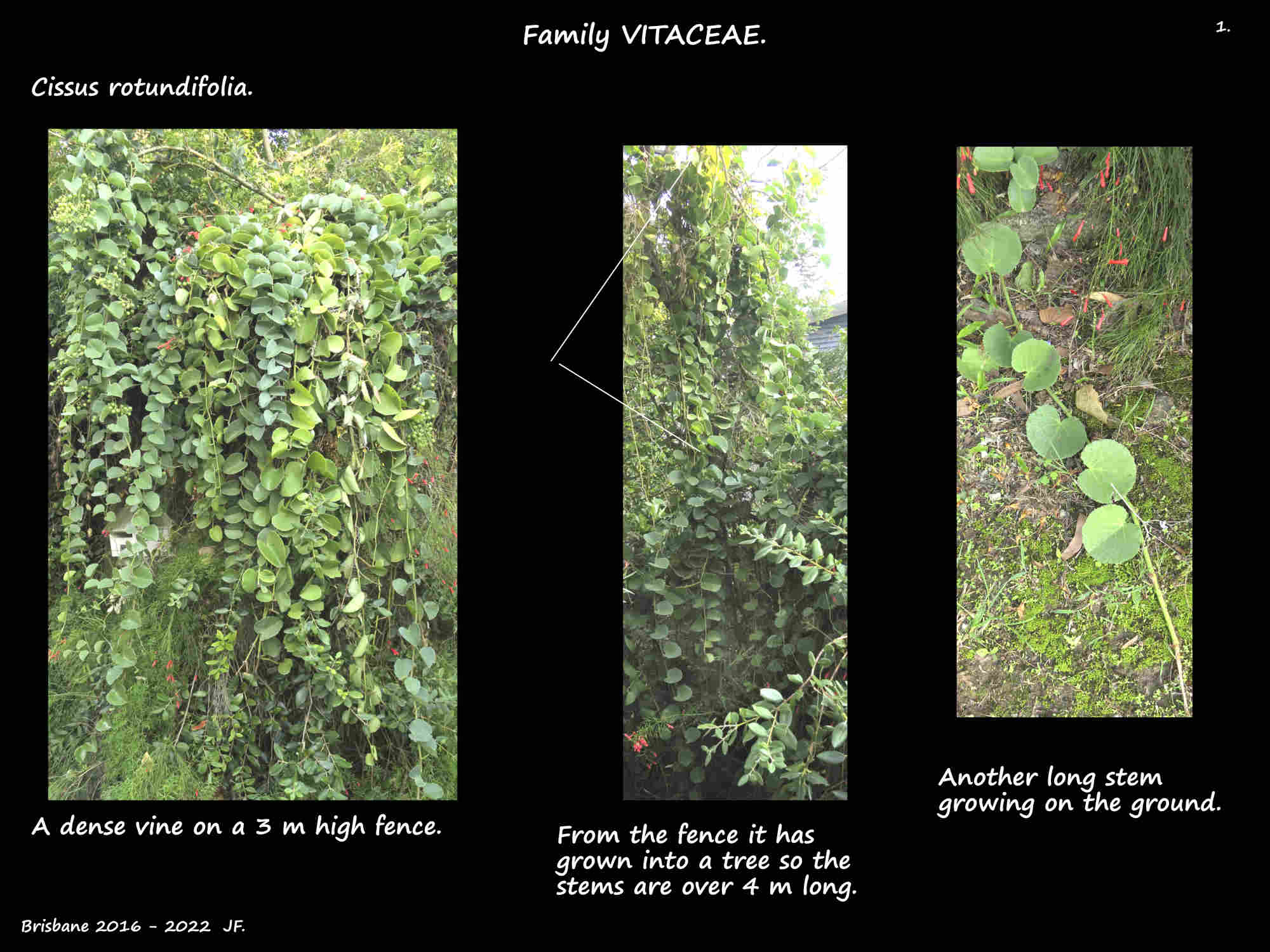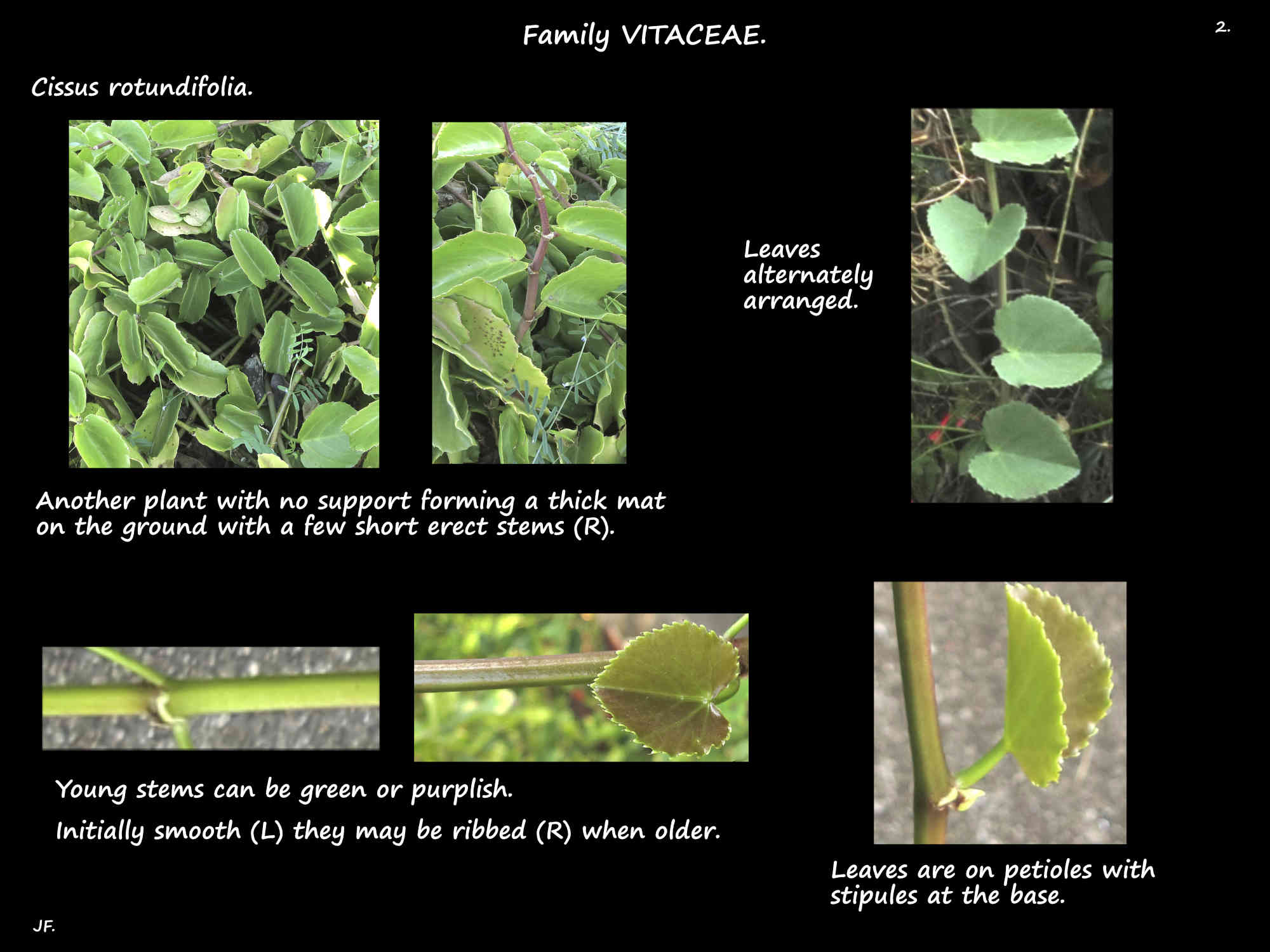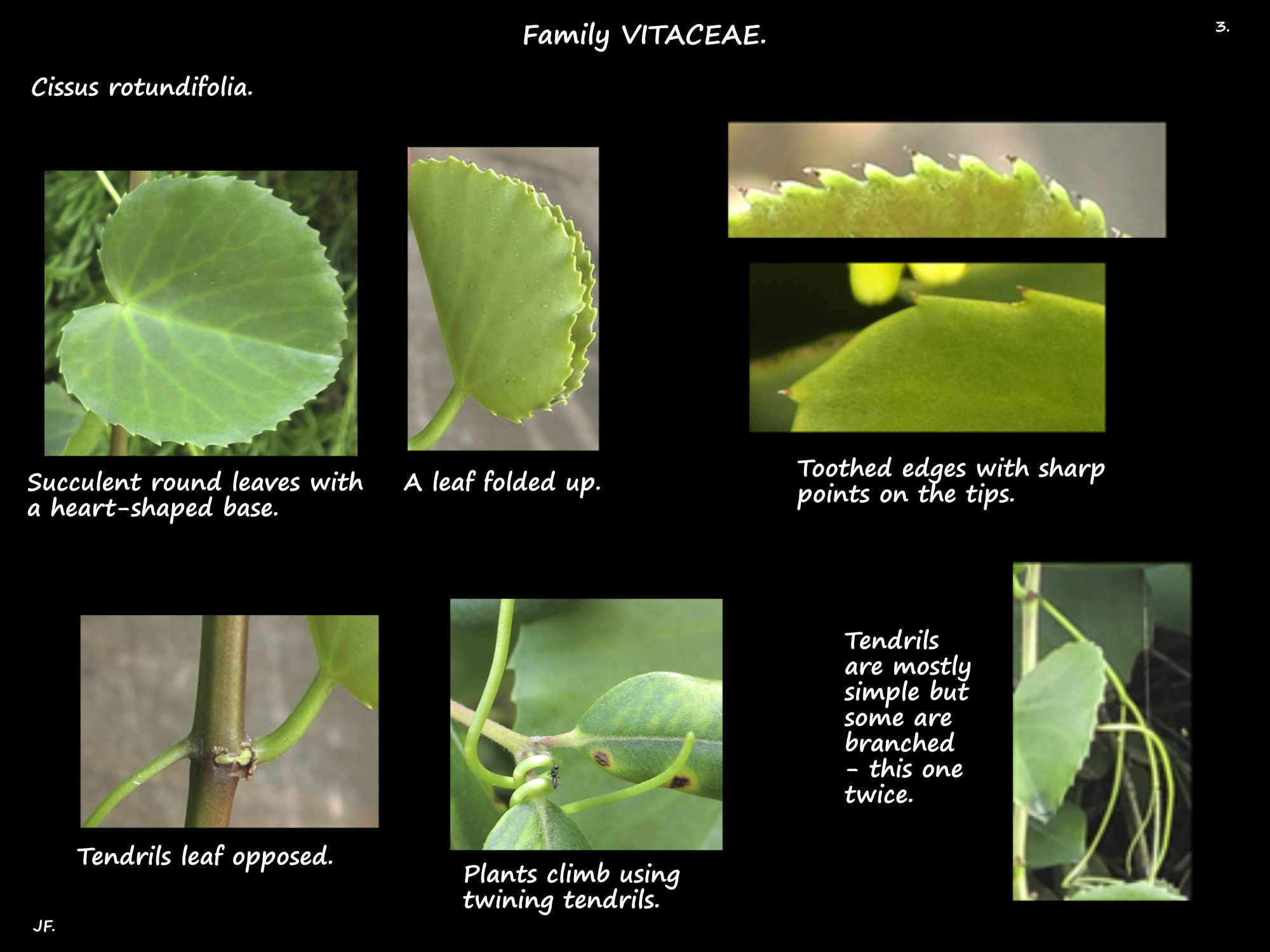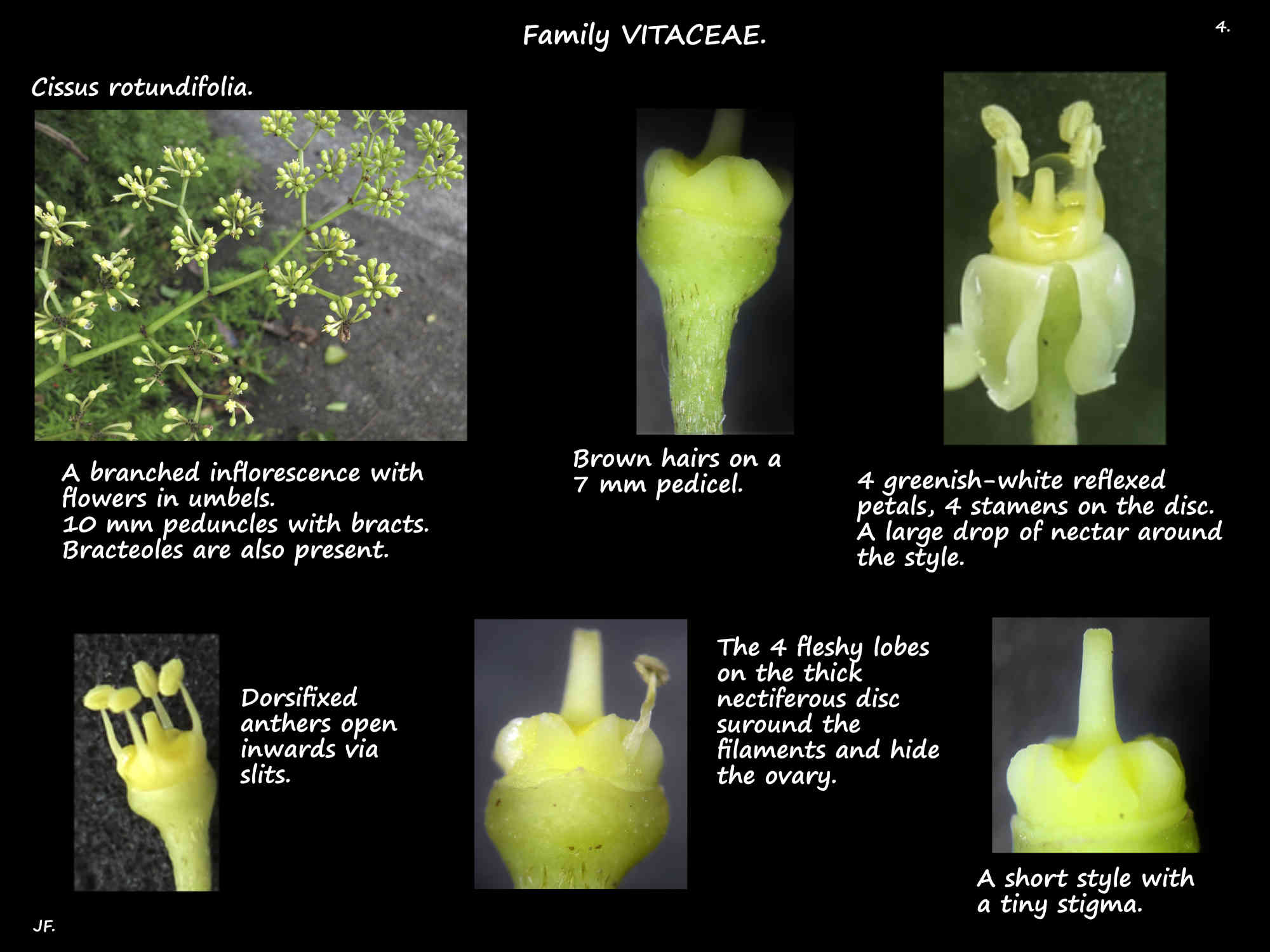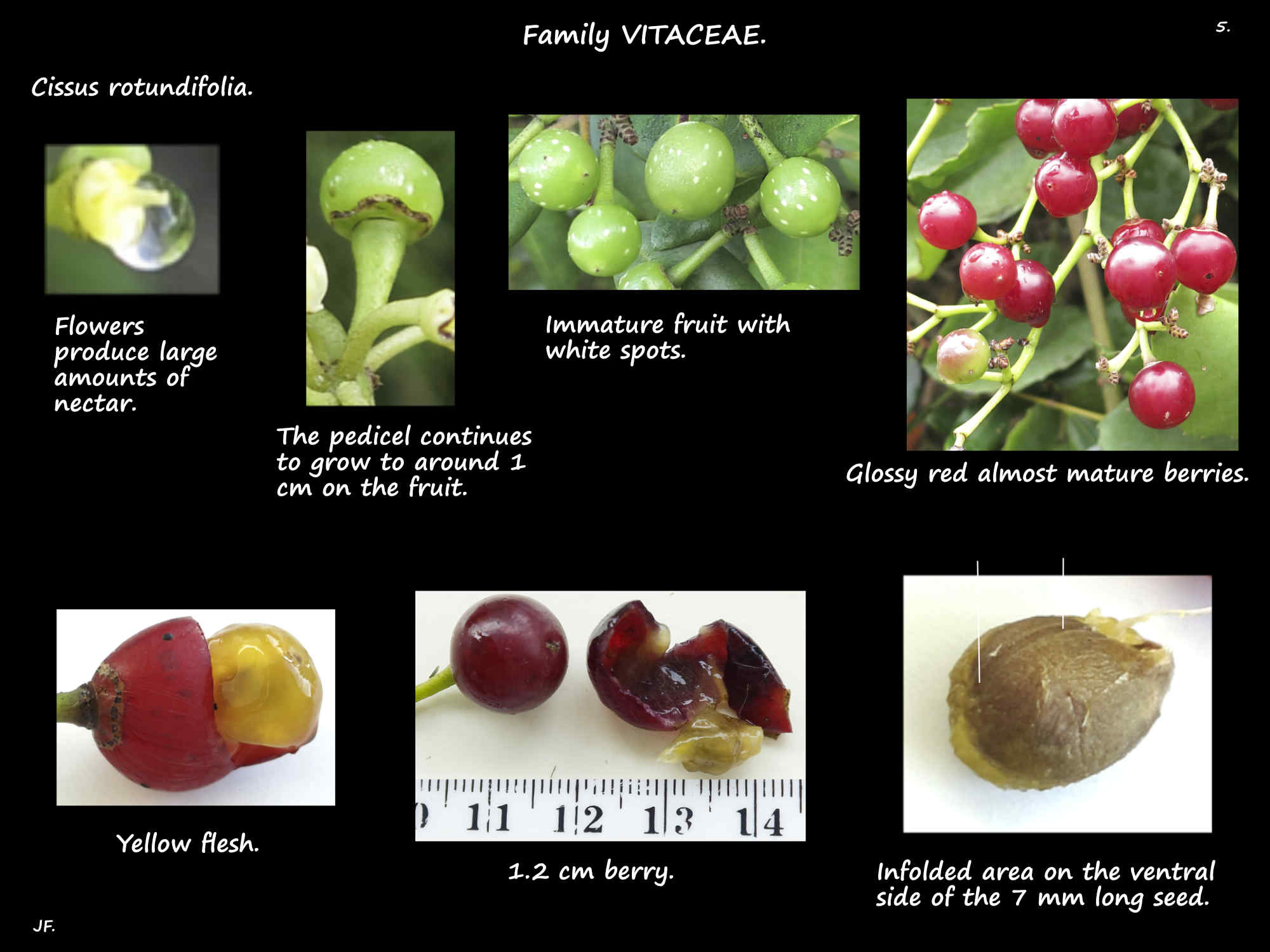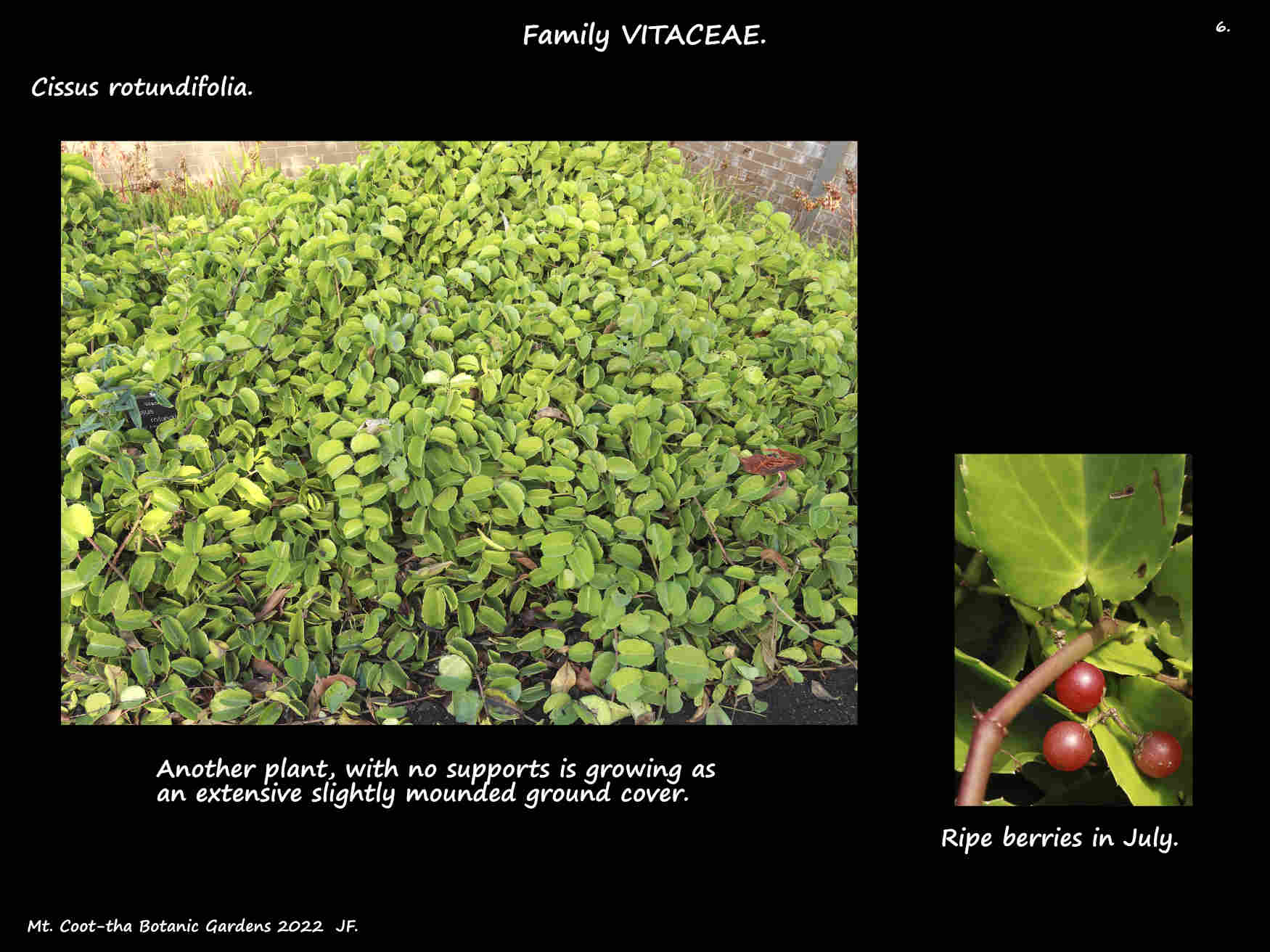Cissus rotundifolia.
A vigorous vine with stems up to 9 m long that may become invasive.
Fleshy young stems are roughly circular in cross section and may have a purplish tint.
Old branches become woody and are 4 (5) angled sometimes with wings.
Young stems (and leaves) may have scattered or dense brownish hairs.
Older stems have no hairs.
Stems climb using twining tendrils that are mostly unbranched.
The simple leaves are on petioles 1 to 2 cm long.
Petioles may be smooth but there are usually some hairs.
The roughly circular, fleshy, blue-green blades are around 3 cm across.
The tip is rounded, the base heart-shaped and the edges are usually toothed.
The 4 to 5 mm long ovate, hairless stipules fall off early.
The branched inflorescences, up to 25 cm long are leaf-opposed.
The terminal branches in them have flowers in umbels.
The peduncles are around 3 cm long and may have some hairs.
The pedicels are a few mms long and also have some hairs.
The calyx, around 2 mm long has a flat rim.
The white, yellowish or greenish petals are around 3 mm long.
The four stamens are inserted on the disc.
The superior ovary has a style only 0.5 mm long.
None of these parts have hairs.
The fruit are berries around 14 mm long and wide.
The pedicel continues to grow as the fruit develops ending up 1 cm long.
The berries ripen from green to bright red then dark red or purplish.
There are 1 or 2 seeds with a ridge on the dorsal surface.
There are a number of cultivars with a more erect habit and larger or more divided leaves.
J.F.
